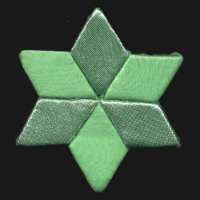| Volumes | |
| Breakdown | |
| Symmetry | |
| Mosaic | |
| Patchwork | |
| Project | |
Web created by the CEIP Pompeu Fabra's computer department .
If you want to join us, feel free to send your pictures and comments!!
Patchwork is an American tradition
that started with the first people who came from Europe. They found that
the textil industry was starting and each piece of clothing was a small
treasure for them. Each piece of clothing was recycled for a new use,
even the most worn out were useful for stuffing.
Small geometrical figures were the basis for patchwork rhombs, triangles,
rectangles and squares were cut and sewn to make bedspreads, curtains
or pillows.
We took advantage of that hobby to help our students discover the possibilities
some geometrycal figures apart from being in maths books.
|
Another basic figure is the isosceles rectangle triangle. It's a square divided into two halves. It's used in many figures. One of the most common ones is the "bear print". |
|
|
Can you discover equilateral
triangles and isosceles ones in all these handicrafts? |
Full of stars!!!
|
|
This seems to be made with curved lines, right? Closely you'll see there aren't any curved lines. |
Would you like
to see these "circles" closer? |
|
Small cubes, stars and mixed cubes. |
Do you know how this one was made to seem to have volume? Look at the piece in the middle, the ones on, under and next to it!! |








